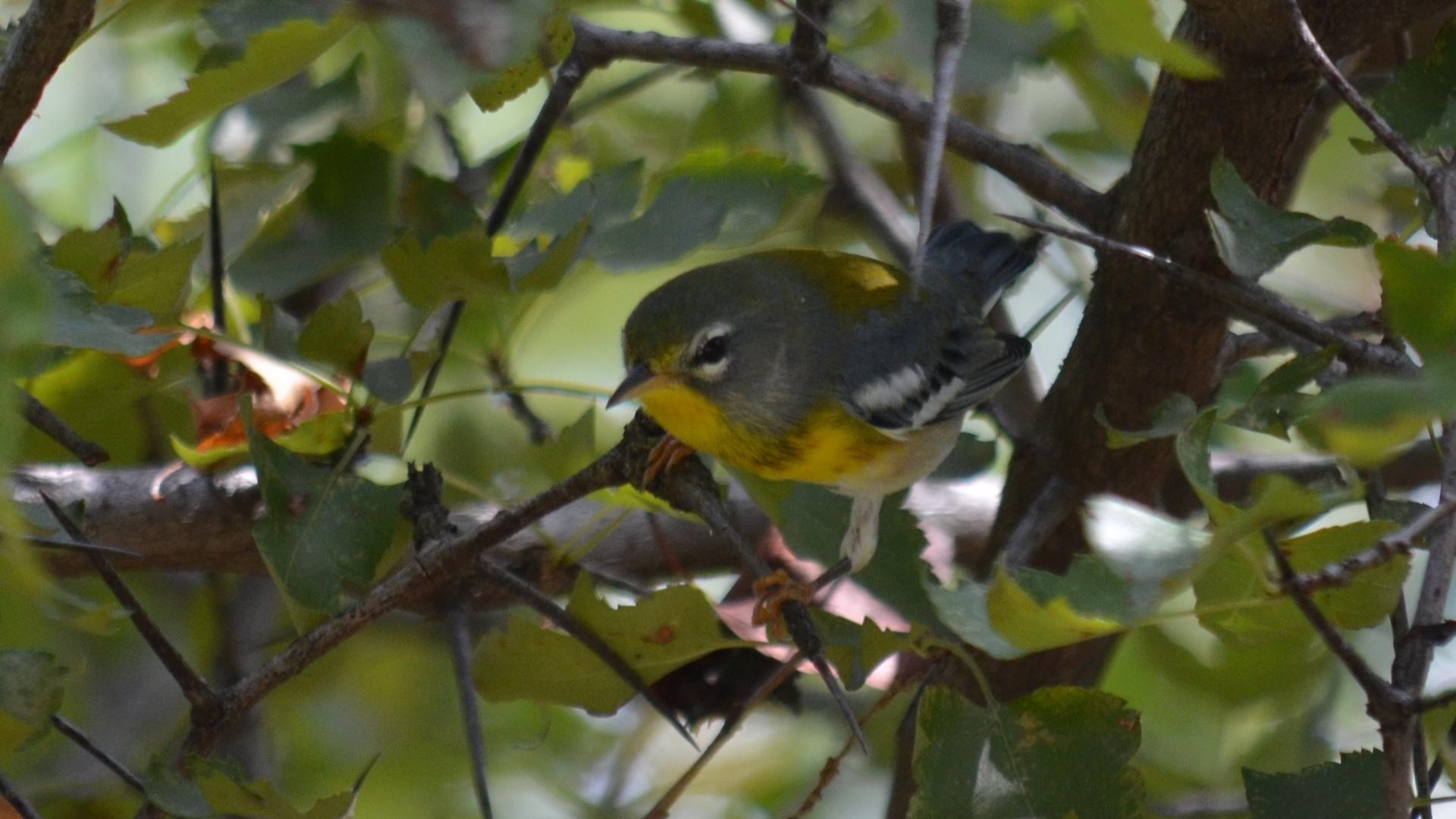Northern Parula
A species of Setophaga Warblers, Also known as Northern Parula Warbler Scientific name : Setophaga americana Genus : Setophaga Warblers
Northern Parula, A species of Setophaga Warblers
Also known as:
Northern Parula Warbler
Botanical name: Setophaga americana
Genus: Setophaga Warblers
Content
Description People often ask General Info
 Photo By Andy Reago & Chrissy McClarren , used under CC-BY-2.0 /Cropped and compressed from original
Photo By Andy Reago & Chrissy McClarren , used under CC-BY-2.0 /Cropped and compressed from original Description
The northern parula is one of the smaller North American migratory warblers, often being one of the smallest birds in a mixed feeding flock besides kinglets or gnatcatchers. Length is 10.8 to 12.4 cm (4.3 to 4.9 in), wingspan is 16 to 18 cm (6.3 to 7.1 in) and body mass is 5 to 11 g (0.18 to 0.39 oz). Among standard measurements, the wing chord is 5.1 to 6.5 cm (2.0 to 2.6 in), the tail is 3.7 to 4.5 cm (1.5 to 1.8 in), the bill is 0.8 to 1.1 cm (0.31 to 0.43 in) and the tarsus is 1.5 to 1.8 cm (0.59 to 0.71 in). This species has mainly blue-gray upper parts, with a greenish back patch and two white wing bars. The breast is yellowish shading into the white belly. The summer male has bluish and rufous breast bands and prominent white eye crescents. At the end of the breeding season, individuals molt into a duller version of the breeding plumage. Females are similar-looking but tend to be duller and lack the breast bands. The unique breastband fades in males and may disappear altogether in females. Its song is a click-like trill or buzz, zeeeeee-yip and the call is a soft chip. 
Size
11 cm (4.25 in)
Colors
Green
Yellow
Gray
Blue
Life Expectancy
4 years
Nest Placement
Tree
Clutch Size
2 - 7 eggs
Incubation Period
1 - 2 broods
Number of Broods
12 - 14 days
Nestling Period
10 - 11 days
Feeding Habits
Northern Parula's diet primarily consists of spiders and insects, such as caterpillars, beetles, moths, ants, wasps, bees, flies, and locusts. Seasons influence their diet; they may consume bud scales during breeding and berries, seeds, or nectar in winter.
Habitat
Northern Parula is commonly found in mature, moist forests, particularly those near streams, swamps, and other wetlands. Favored environmental conditions include elevated tree species diversity, heightened canopies, and dense canopy cover. While southern populations show a preference for bottomland forests draped with Spanish moss, northern counterparts opt for coniferous woods abundant in hanging moss or spruce bogs. During migration and winter, northern Parula demonstrates habitat flexibility, occupying a range from pastures and plantations to various forest types and wet or dry agricultural fields.
Nest Behavior
The female northern Parula is the primary nest builder, taking approximately 4 days to construct the nest, where she then lays eggs. Parental care includes incubation and feeding.
Nest Characteristics
Northern Parula typically nests in hanging clumps of epiphytes, such as Spanish moss, beard moss, or lace lichen. Located at the end of tree branches, sometimes up to 100 feet high, the nests are about 3 inches across and 2 inches deep, with a side entrance and a cup lined with fine materials.
Dite type
Insectivorous
People often ask
General Info
Feeding Habits
Bird food type
Bird Feeder Type

Small Tube Feeder

Platform
Sounds
Song
Recording location: United States
Behavior
Northern Parula exhibit a dynamic lifestyle, actively foraging through meticulous gleaning of leaves and branch tips, hunting for insects and spiders with swift wingbeats and agile hops. Singularly or in pairs, they are industrious in their breeding territory but display gregarious tendencies on migration, joining mixed-species flocks. A notable defensive display includes a distinct drooping of wings while emitting their calls, setting them apart behaviorally from their avian counterparts.
Distribution Area
This species is migratory, wintering in southern Florida, northern Central America, the West Indies and most of the Lesser Antilles. This species is a very rare vagrant to western Europe. While the species is still common as a breeder across most of eastern North America, there are conspicuous gaps in their breeding range that were likely once breeding grounds. They have been extirpated as a breeder from much of the Midwest as well as from many areas in Massachusetts, New Jersey, Connecticut, New York, Rhode Island and Vermont. Explanations for the disappearance may be changes in habitat or increasing air pollution, which limited the growth of epiphytes on trees that the warbler depended on for nesting. A further explanation is the clear-cutting and bog draining that have significantly reduced the amount of suitable habitat in eastern North America. 
Species Status
Not globally threatened.

 Photo By Andy Reago & Chrissy McClarren , used under CC-BY-2.0 /Cropped and compressed from original
Photo By Andy Reago & Chrissy McClarren , used under CC-BY-2.0 /Cropped and compressed from original Scientific Classification
Phylum
Chordates Class
Birds Order
Perching birds Family
New world warblers Genus
Setophaga Warblers Species
Northern Parula